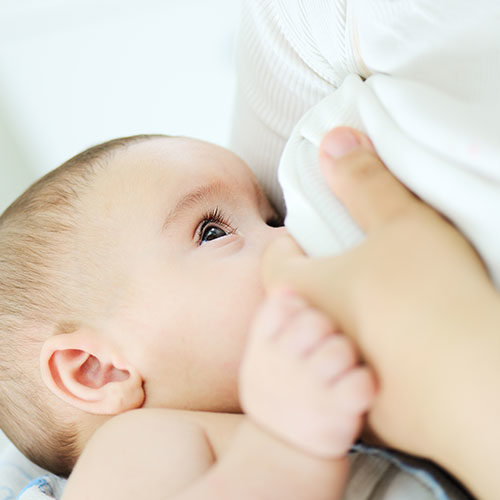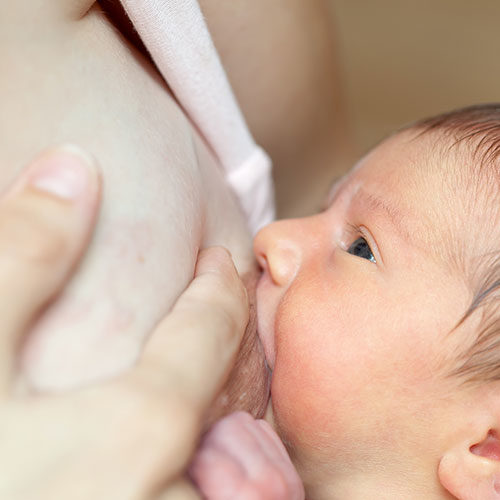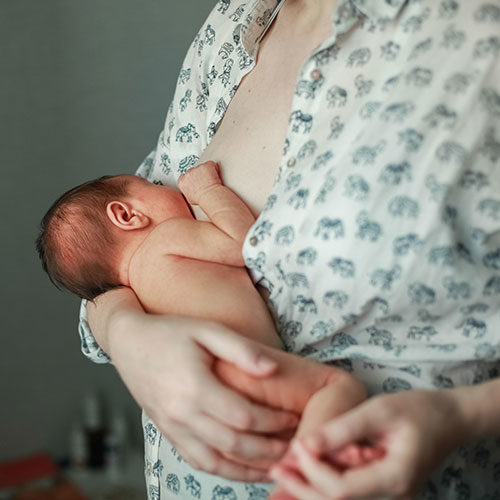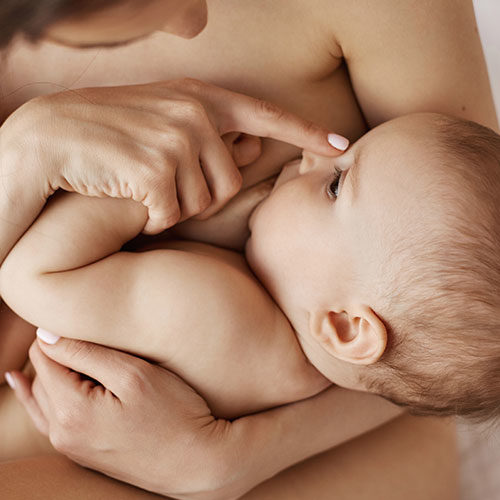How can I breastfeed my baby when out in public?
As we famously call it NIP (Nursing In Public) at BSIM, it is a very important part of any breastfeeding journey. NIP is not just convenient, but also incredibly empowering.
Nursing in public is a right of a breastfeeding mother and her baby alike. Just how the grown-ups can eat in public places, a baby has the right to eat her food too.
An argument often made by people who don’t support breastfeeding against nursing in public is that – it is indecent. This argument stems from a mindset that accepts and promotes the over-sexualisation of human breasts. All mammals have breasts; its function being providing nourishment to its young. Humans are mammals too. And women’s breasts to serve the same function. It is sad that the over-sexualization of breasts coupled with centuries of patriarchy has left ‘breastfeeding’ – the most natural and normal process a taboo.
Some techniques to nurse in public:
1. Using a cover
A woman may choose to use a cover. There are nursing covers available that can be purchased in order to use them while nursing the baby. A lot of these covers also cover the baby. And many babies don’t like to be covered while nursing. Some babies may feel uncomfortable or get irritated when covered and become fussy or refuse to nurse as a result. Older infants may even pull the cover off if they are feeling hot, or restricted or otherwise uncomfortable. A cover might even attract more attention as they can be pretty conspicuous.
2. Two – t-shirt method
This is a very discreet method in which a camisole (a slip/inner) is worn under the t-shirt. While latching the baby, the camisole can be pulled down (along with the bra) and the t-shirt can be pulled up. This only makes way for the nipple (and little part of the breast) long enough for the baby to latch. Once the baby is latched on, the nipple and the breast are blocked entirely by the baby’s head. Also, the t-shirt can be left to fall on the baby. When looked at from any direction, the breast is barely visible. With practice, this method becomes so discreet that even the latching becomes a matter of a tiny moment. This method is almost as effective as using a cover in the sense of avoiding any exposure.
3. Nursing in a carrier
A lot of women nurse their babies while carrying their baby in their baby carrier. Slings, SSCs and even saree or dupatta wraps can accommodate nursing pretty easily. This gives a lot of freedom to the mother as she can nurse the baby handsfree while walking, talking and pretty much-doing anything she wants.
4. Not using any technique
Covering up, keeping it discreet, using nursing rooms to breastfeed the baby etc. are all individual choices. But not using any of the above techniques is a choice too. If a woman is comfortable enough, she may choose to nurse the baby, not so discreetly, without any cover! And that’s fine. Breastfeeding at any place and time is a right of both the baby and the mother. In fact, it is against the law to discriminate against a breastfeeding mother. If a mother wishes to breastfeed in a public space, a cafe, shop, park, anywhere, with or without cover, it is her lawful right and she cannot be asked to stop. In many places, there may not be a nursing room. That cannot keep a baby from having her food. Toilet is not a place to nurse a baby. It is extremely unhygienic. And when grown-ups don’t eat their food in a toilet, why should a baby?
Some tips for nursing in public
- Be positive and confident.
- Practice in front of a mirror, around close friends first.
- Plan well. Keep necessary things ready e.g. a nursing cover (if needed), water for you (for hydration), a favourite toy of the baby etc.
- Look at nursing as a natural part of your daily routine. Don’t get too worked up about it while doing it in public. It’s just a normal thing that happens to be done outside on some occasions just how it happens at home.
- Do not delay nursing too much. Young babies may get very cranky if not nursed on demand. And latching a cranky baby in public can become a difficult task as far as being discreet is concerned.
- If ever faced with frowns or remarks, ignore and continue nursing with a calm and confident manner.
Breastfeeding friendly clothing:
Apart from the 2 t-shirt method described above which usually supports most western casual clothing, there can be other hacks that can be tried to make any kind of clothing breastfeeding friendly. Here are a few examples –
- Installing zips below or on the side of the breasts in Salwars, Kurtis or other dresses.
- Low neck (or flexible) dresses or t-shirts can make it easier to pull the neckline further down to take out the breast. This is most helpful while nursing in a carrier and can be convenient otherwise as well.
- Traditional Indian sarees are extremely breastfeeding-friendly as the pallu works as a natural cover.
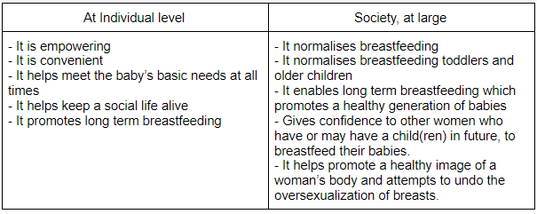
Travelling with a Breastfed Baby :
Travelling with a baby becomes a lot easier when the baby is breastfed. It takes care of the baby’s hunger and thirst without having to make any kind of preparations and also works as a fantastic tool to soothe the baby, put the baby to sleep and to keep the baby comfortable in general. Here are some tips to follow while travelling with a breastfed baby.
Air Travel
- All international airports and major domestic airports have nursing rooms available. If not, the baby can be nursed anywhere in the airport where both baby and mother are comfortable.
- Babywearing is extremely useful as it leaves the mother handsfree. Nursing in the carrier while airport transits etc makes it much easier.
- Some airlines recommend nursing the baby while take-off and landing. This is a useful practice as it handles the possibility of any discomfort to the baby.
- Some airlines require the baby to be seated in the mother’s lap with an extended seatbelt fastened. (mostly in case of toddlers.) This can be tricky if the baby demands to nurse at the time of take-off and landing or is uncomfortable and/or cranky. Usually, the crew allows the mother to breastfeed her baby in such circumstances.
- Choosing comfortable seats can be helpful in long travels. Booking in advance can help.
- While travelling a long distance, a direct flight might make it easier to handle the baby as opposed to having to manage the baby during long layovers.
Train Travel
- Chair cars could feel congested, especially while travelling alone with a baby. The sleeper coaches are more comfortable as there is more space and in all likelihood, the fellow passengers co-operate and do give some extra space for the baby.
- If there is a night journey, nursing lying down is the best option. It remains pretty discreet as the baby is way up the sleeping berth and the mother is turned towards the baby, preventing any exposure of the breast.
Road Travel
Travelling by personal vehicle –
- This is very easy as one can take as many nursing breaks as required.
- Keep some buffer time to reach your destination as nursing breaks will slow down the journey to quite some extent.
Travelling by public transport
- The road travels via public transport are usually short in nature. A couple of hours of a bus journey or a cab journey become very easy while wearing the baby and nursing the baby whenever needed, on the go.
- Overnight bus journeys have sleeping berths and the mother can breastfeed her baby in the side-lying position.
References:
https://www.laleche.org.uk/out-about-with-your-breastfed-baby/
https://www.llli.org/breastfeeding-in-public-spaces/
https://www.llli.org/traveling-with-your-breastfed-child-enjoy-the-trip/
https://kellymom.com/bf/concerns/legal/bfip/
https://www.breastfeedingbasics.com/articles/public-nursing
Wish to speak with a member of our team who is a certified lactation professional and also an experienced breastfeeding mother, click on this link.
Medical Advice Disclaimer
THIS WEBSITE DOES NOT PROVIDE MEDICAL ADVICE.
The information, including but not limited to, text, graphics, images and other material contained on this website are for informational purposes only. No material on this site is intended to be a substitute for professional medical advice, diagnosis or treatment. Always seek the advice of your physician or other qualified health care provider with any questions you may have regarding a medical condition or treatment before undertaking a new health care regimen, and never disregard professional medical advice or delay in seeking it because of something you have read on this website.
Disclaimer
We understand and acknowledge that parents and babies can be of various genders on a spectrum of LGBTQI+. Families come in diverse flavours. However, in our articles, for the sake of simplicity and convenience, we will be referring to the breastfeeding parent as the mother and using the female pronouns- ‘she’ and ‘her’ for babies. Babies can be nourished and nurtured in different ways and while we have used the terms breastfeeding and nursing, we recognize that parents can opt to chest feed or finger feed.
We don’t have conflicts of interest and declare, and we are compliant with the WHO code of marketing of breastmilk substitutes and the IMS act.
In case you find any information on this website that needs to be updated, please write to us at info@bsim.org.in

